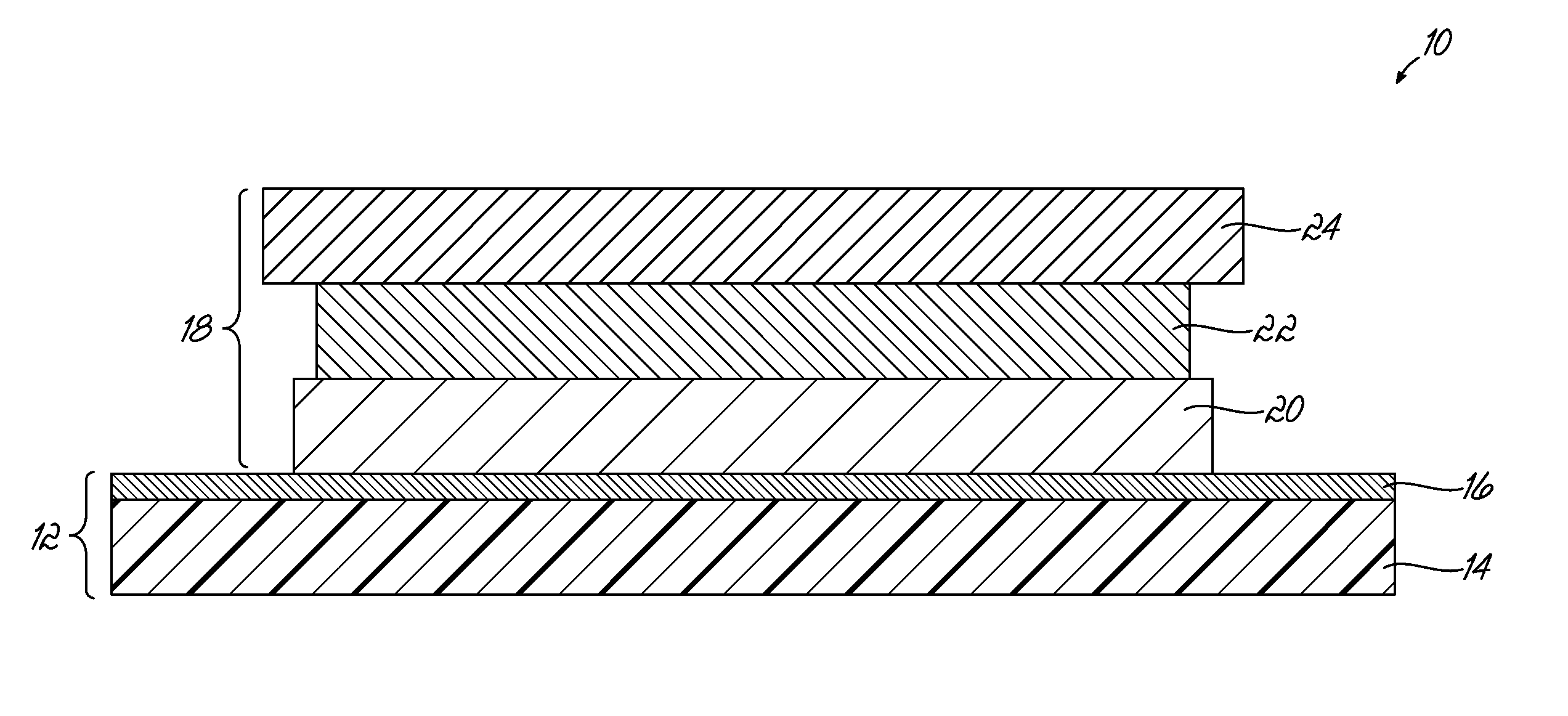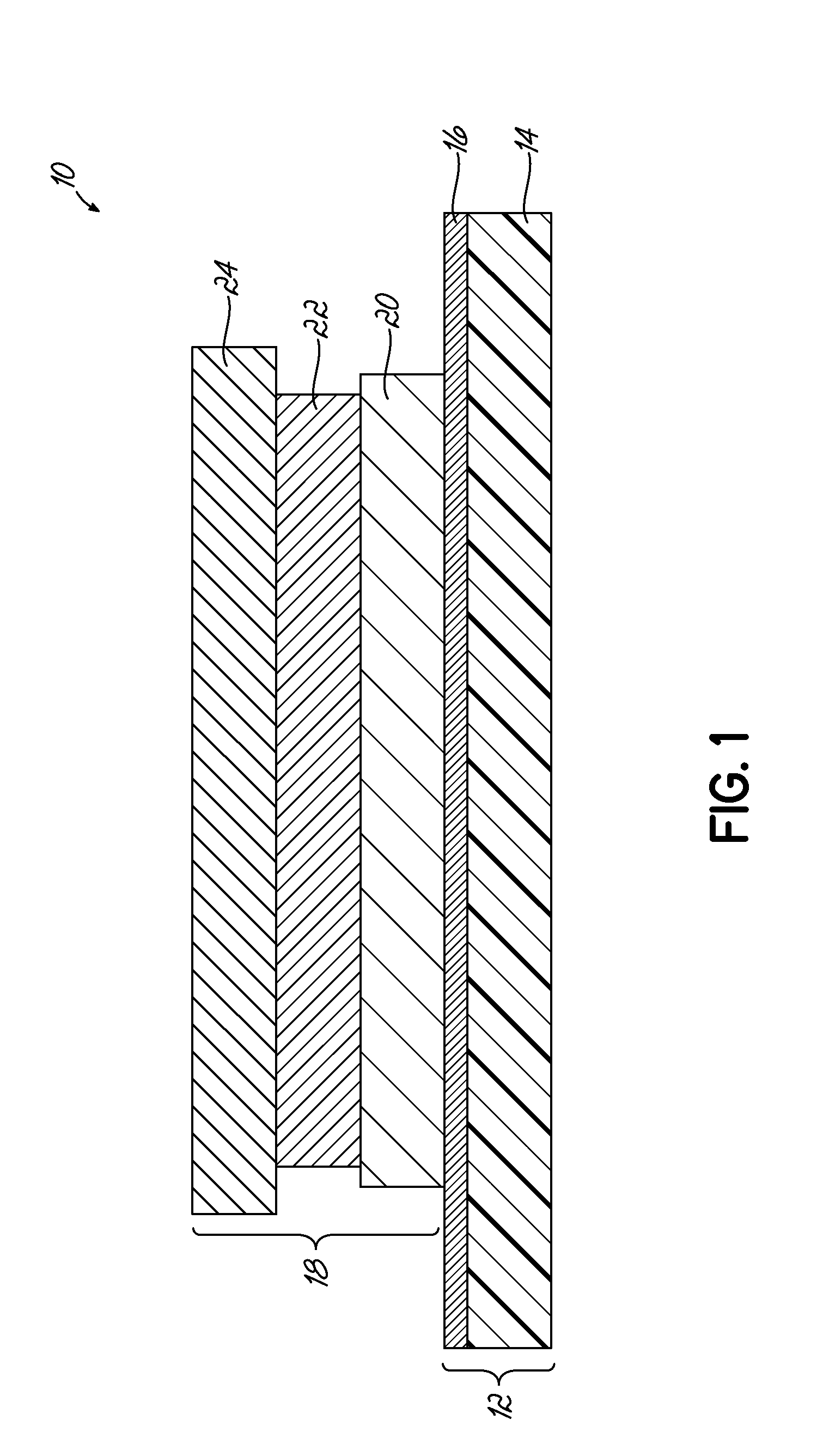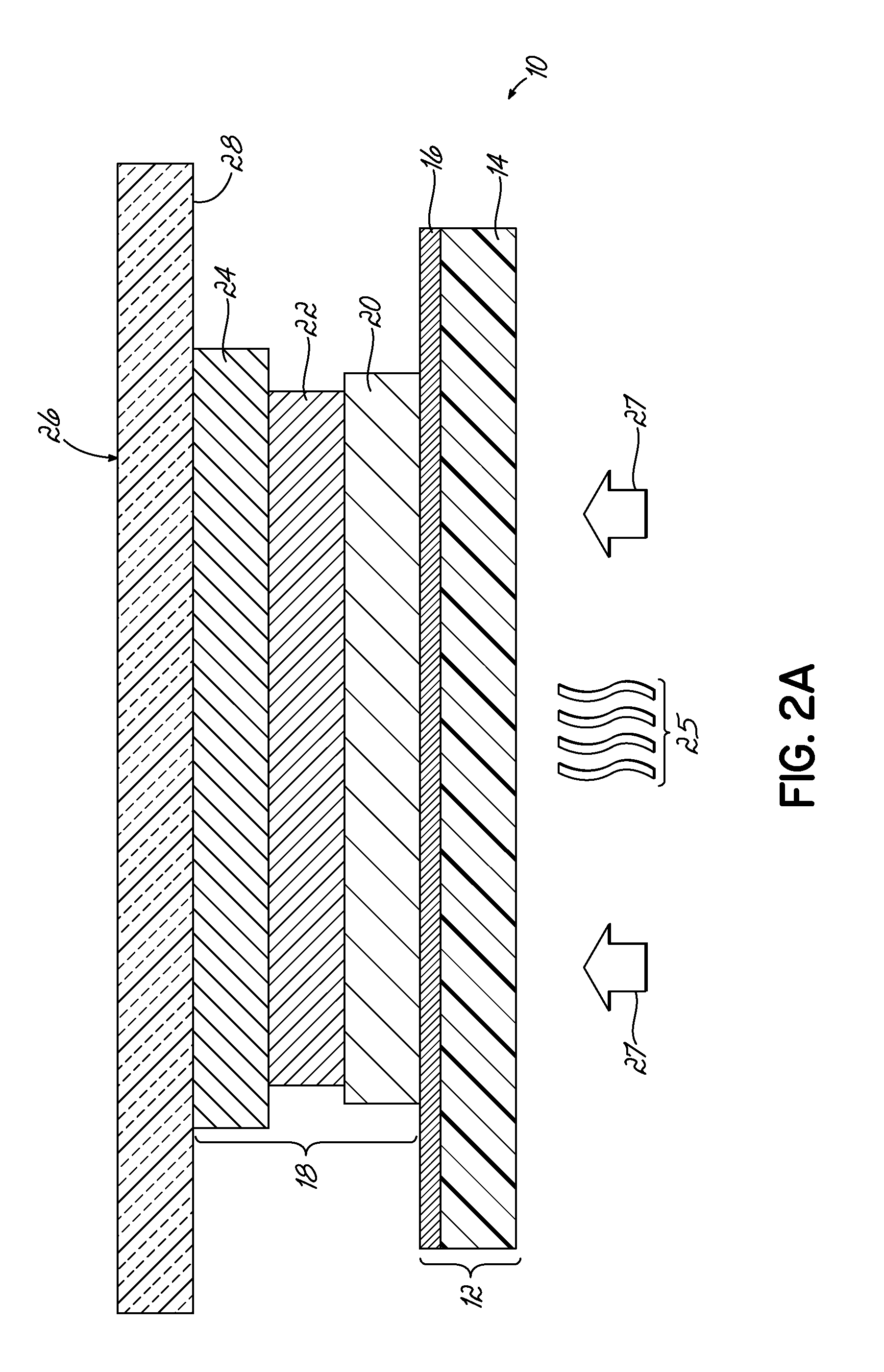Heat Transfer Label Having a UV Layer
- Summary
- Abstract
- Description
- Claims
- Application Information
AI Technical Summary
Benefits of technology
Problems solved by technology
Method used
Image
Examples
example 1
[0083]A heat transfer label was formed by printing the components of the transfer portion as described in the embodiment of FIG. 3. A solvent protective lacquer, Gotham PL2 Varnish 46-1333, was applied to a wax release paper using conventional flexographic printing techniques, well known to those of ordinary skill in the art. The solvent lacquer was dried in a conventional enclosed hot air dryer, well known to those of ordinary skill in the art.
[0084]A design was then printed over the protective lacquer layer using Gotham Ink Company FP-500 NUV series UV-curable inks using conventional flexographic printing techniques. 600 W GEW UV lamps were used after the application of each ink layer to cure the ink. Complete cure of the ink was observed with no tracking or smudging. A solvent adhesive layer, Gotham Ad-Bond Adhesive 46-1335, was then overprinted on the design. The solvent adhesive layer 24 was dried in a conventional enclosed hot air dryer. The resulting web was wound into roll f...
example 2
[0088]A heat transfer label was formed by printing the components of the transfer portion as described in the embodiment of FIG. 4. A solvent protective lacquer, Gotham PL2 Varnish 46-1333, was applied to a wax release paper using conventional flexographic printing techniques. The solvent lacquer was dried in a conventional enclosed hot air dryer.
[0089]A design was then printed over the protective lacquer layer using Gotham Ink Company FP-500 NUV series UV-curable inks using conventional flexographic printing techniques. 600 W GEW UV lamps were used after the application of each ink layer to cure the ink. Complete cure of the ink was observed with no tracking or smudging.
[0090]A UV tie-coat layer, Gotham FP-500 NUV75, was then overprinted on the design. 600 W GEW UV lamps were used to cure the tie-coat layer. Complete cure of the layer was observed with no tracking or smudging.
[0091]A solvent adhesive layer, Gotham Ad-Bond Adhesive 46-1335, was then overprinted on the design. The so...
example 3
[0097]A heat transfer label was formed by printing the components of the transfer portion as described in the embodiment of FIG. 5. A solvent protective lacquer, Gotham PL2 Varnish 46-1333, was applied to a wax release paper using conventional flexographic printing techniques. The solvent lacquer was dried in a conventional enclosed hot air dryer.
[0098]A design was then printed over the protective lacquer layer using Gotham Ink Company FP-500 NUV series UV-curable inks using conventional flexographic printing techniques. 600 W GEW UV lamps were used after the application of each ink layer to cure the ink. Complete cure of the ink was observed with no tracking or smudging.
[0099]A UV tie-coat layer, Gotham FP-500 NUV75, was then overprinted on the design. 600 W GEW UV lamps were used to cure the tie-coat layer. Complete cure of the layer was observed with no tracking or smudging.
[0100]A UV-curable adhesive, Gotham FP-500 NUV85, was then overprinted on the design. 600 W GEW UV lamps we...
PUM
| Property | Measurement | Unit |
|---|---|---|
| Fraction | aaaaa | aaaaa |
| Fraction | aaaaa | aaaaa |
| Fraction | aaaaa | aaaaa |
Abstract
Description
Claims
Application Information
 Login to View More
Login to View More - R&D
- Intellectual Property
- Life Sciences
- Materials
- Tech Scout
- Unparalleled Data Quality
- Higher Quality Content
- 60% Fewer Hallucinations
Browse by: Latest US Patents, China's latest patents, Technical Efficacy Thesaurus, Application Domain, Technology Topic, Popular Technical Reports.
© 2025 PatSnap. All rights reserved.Legal|Privacy policy|Modern Slavery Act Transparency Statement|Sitemap|About US| Contact US: help@patsnap.com



